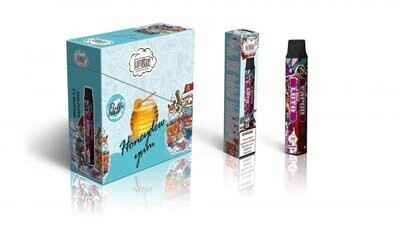

The enforcement guidance issued by Food and Drug Administration was aimed at stopping young people from vaping. These products are flourishing despite the Trump administration's partial ban on flavored e-cigarettes, announced in January and in effect as of Feb 5.

"These have just flooded the market," Berkman says. "Among the disposables are most popular, there's Puff Bar, there's Stig, there's Viigo," Berkman says. It's no longer the teen favorite," says Meredith Berkman, co-founder of the advocacy group PAVE, Parents Against Vaping E-cigarettes. By the time Juul pulled most of its flavored pods from the market in October of 2019, many teens had already moved on to an array of newer, disposable vape products. She received a bag of vape pens recently confiscated by a high school principal in northern California, with flavors like Banana Ice and Cool Mint.Įfforts to stem the tide of teen vaping seem to be a step behind the market.

You’re exposing yourself to all kinds of chemicals that we don’t yet understand and that are probably not safe.Disposable vapes may be hotter than Juul among kids, according to researcher Bonnie Halpern-Felsher.

Emerging data suggest links to chronic lung disease and asthma, as well as associations between dual use of e-cigarettes and smoking with cardiovascular disease. There are many unknowns about vaping, including what chemicals make up the vapor and how they affect physical health over the long term. It raises your blood pressure and spikes your adrenaline, which increases your heart rate and the likelihood of having a heart attack. It causes you to crave a smoke and suffer withdrawal symptoms if you ignore the craving. Nicotine is the primary agent in regular Luto vape and it is highly addictive. Among those the team could identify were several potentially harmful substances, including caffeine, three chemicals never previously found in e-cigarettes, a pesticide, and two flavorings linked with possible toxic effects and respiratory irritation. Research from The Johns Hopkins University on vape ingredients published in October 2021 reveals thousands of chemical ingredients in vape products, most of which are not yet identified. Do not modify or add any substances to a vaping device that are not intended by the manufacturer.Avoid using informal sources, such as friends, family, or online dealers to obtain a vaping device.Do not use THC-containing e-cigarettes or vaping products.Vitamin E acetate is a thickening agent often used in THC vaping products, and it was found in all lung fluid samples of EVALI patients examined by the CDC. The CDC has identified vitamin E acetate as a chemical of concern among people with EVALI. This is especially true for vaping products containing THC. These cases appear to predominantly affect people who modify their vaping devices or use black market modified e-liquids. In February 2020, the Centers for Disease Control and Prevention (CDC) confirmed 2,807 cases of e-cigarette or vaping use-associated lung injury (EVALI) and 68 deaths attributed to that condition. However, there has been an outbreak of lung injuries and deaths associated with vaping. While we don’t know exactly what chemicals are in Luto vape, there’s almost no doubt that vaping exposes you to fewer toxic chemicals than smoking traditional cigarettes. Regular tobacco cigarettes contain 7,000 chemicals, many of which are toxic. Vaping experience of any kind is not safe, E-cigarettes heat nicotine (extracted from tobacco), flavorings, and other chemicals to create an aerosol that you inhale.


 0 kommentar(er)
0 kommentar(er)
